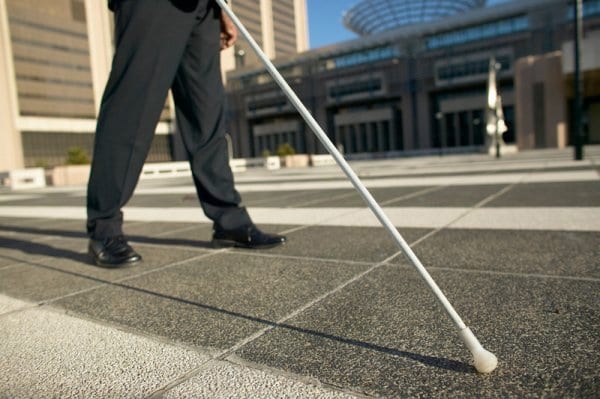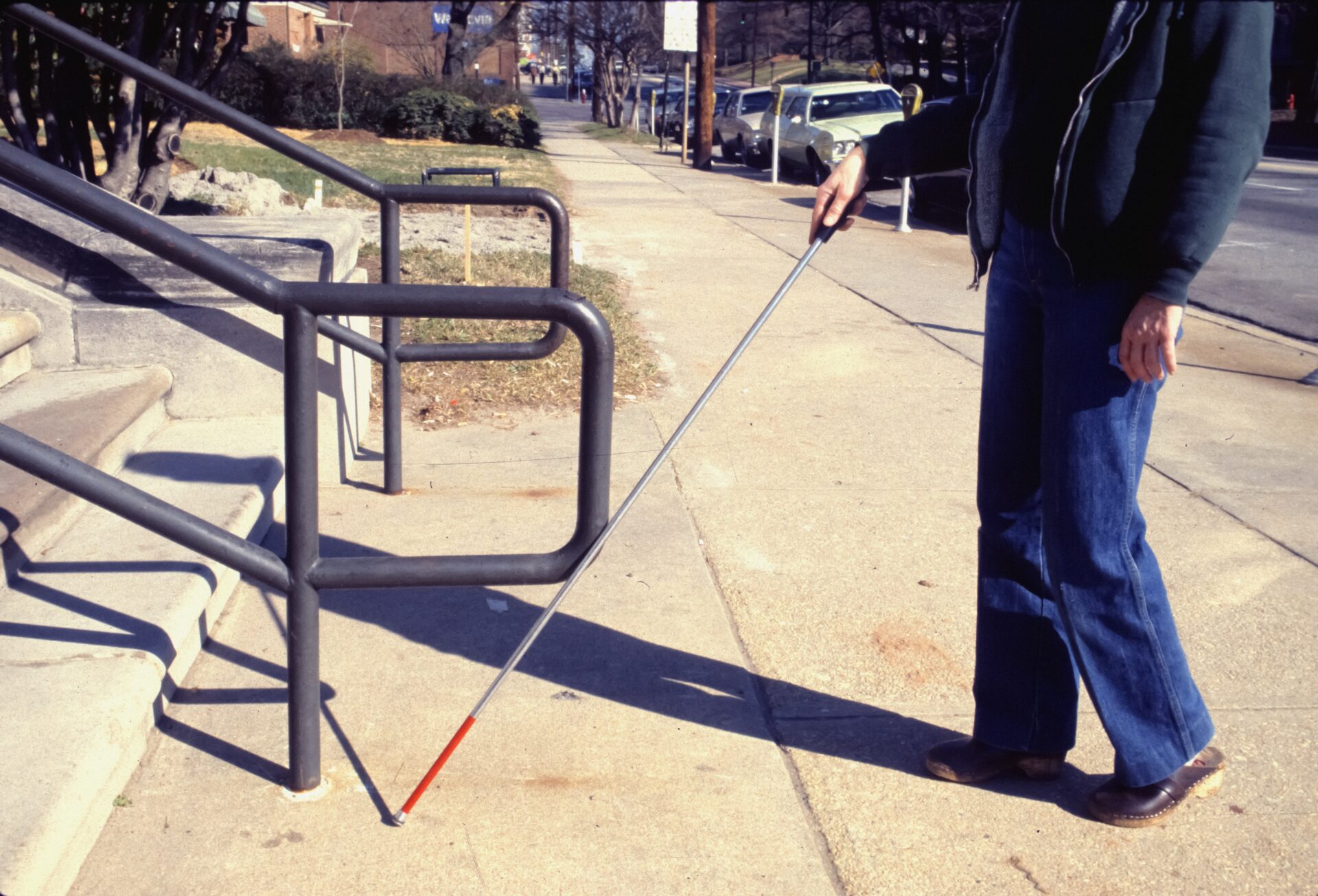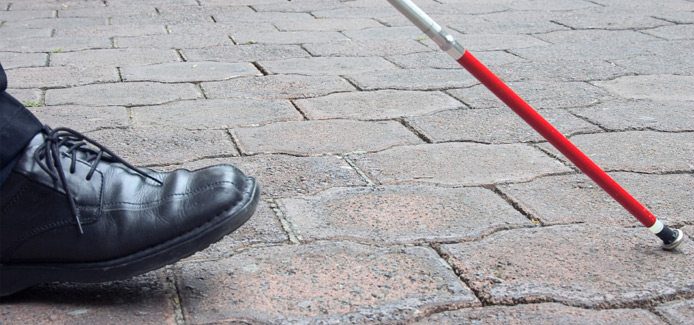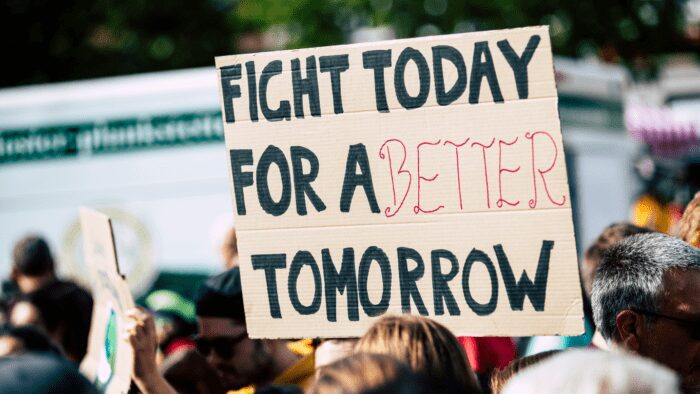It’s October 15th: White Cane Safety Day!

Table of Contents
October 15th is White Cane Safety Day!
If you don’t know, white canes aid individuals with visual disabilities or blindness. People use the cane for independence in mobility and navigation. A white cane also makes others aware that the user has a visual impairment.
White Cane Safety Day is a reminder that a person with a visual disability is equal to someone who has sight, including having equal access to roads.
White Cane Safety Day Origin
White Cane Safety Day came about because there was little public awareness around white canes. Many people urged legislators to make it clear that a white cane is a tool to provide independence for people with visual disabilities. They also wanted to raise awareness about how one should interact and treat people with blindness, especially when they are independently moving about the community.
In 1964, President Lyndon B. Johnson proclaimed October 15th of each year as White Cane Safety Day. Each president since Johnson has recognized Americans with visual disabilities on October 15th.

Wait. Are we talking about the same day?
So, is it White Cane Safety Day, White Cane Day, White Cane Awareness Day, or Blind Americans Equality Day?
They are all the same day! The name evolved over time.
White Cane Safety Day set the precedent that Americans with and without sight have the same civil liberties and road access.
In 1964, it wasn’t safe for people with visual disabilities to travel alone. Back then, there weren’t talking crosswalks, tactile pavement, or the same awareness about people with blindness. The lack of awareness also meant cars wouldn’t stop for white cane users.
As awareness improved and some challenges were overcome, the needs of people with visual disabilities have changed. Therefore, elements of this day have changed, too.
A Day for White Cane Safety and Equality
In 2011, President Barack Obama elevated White Cane Safety Day to Blind Americans Equality Day with a proclamation that stated: “On Blind Americans Equality Day, we celebrate the achievements of blind and visually impaired Americans and reaffirm our commitment to advancing their complete social and economic integration.”
White Cane Safety Day became Blind Americans Equality Day because it’s equally important to spread awareness and educate the public. On October 15th, we change preconceived notions regarding individuals who are blind.
Action Across the World
The World Blind Union (WBU), which is made up of 190 countries and represents over 253 million blind and partially sighted people, has declared October 15th as International White Cane Day. The WBU shares that with the right mobility training in using a cane, a person who is blind can access many areas of the world independently and with confidence.
White Cane Laws
Today, driver manuals explicitly train drivers to come to a complete stop when a white cane or guide dog is present. Most of us can’t remember a day when we didn’t know to stop for people using white canes.
But that wasn’t always the case.
In 1930, the White Cane Law was created. The law had less to do with equality and more to do with identification. The lawmakers of the time aimed to identify individuals who were blind with white canes. The intention of the law was to keep blind people safe if they were seen out in the community. Yet, the law did not cover removing barriers or creating funding for teaching cane mobility. Independence and equality were not the intention of the White Cane Laws.
Today, the laws are clear that a white cane is a tool for people with visual disabilities. A person who is blind uses a cane to navigate their surroundings independently.
White Cane Laws vary by state, and they are designed to protect people who are blind to promote their independence while using a white cane as a tool.
About White Canes

White Cane Training
White canes have a learning curve, so it is best to practice at home as opposed to the center of town.
Local organizations, like Lighthouse International, provide excellent cane mobility training. You can also read these valuable mobility tips from our co-founder, Lou, an experienced white cane user.
White Cane Sizing
It’s important to get the right fit. Beginners should measure from their armpit to the floor to get the appropriate size. Seasoned white cane users sjpi;d measure from their chin or a bit higher to get the accurate fit.
Ordering a Free White Cane
The National Federation of the Blind believes that all people who are blind or visually impaired deserve a free cane.
You can order online by submitting an application on the Free White Cane Program webpage. If you prefer to apply by mail, complete and print the accessible PDF application found here. Mail your completed applications to:
Free White Cane Program
National Federation of the Blind
200 East Wells Street
at Jernigan Place
Baltimore, MD 21230
Take Action for Accessibility
On this White Cane Safety Day, you can raise awareness about the importance of ADA accessibility.
While awareness is increasing, we need to do more to bring true equality to Americans with visual disabilities.
An excellent place to start is inside your organization. Make ADA compliance an easy path for clients and employees to navigate by making aisles wider in your store, providing easy access to braille documents, and much more. This simple step will show the public that your company cares about more than just the bottom line.


